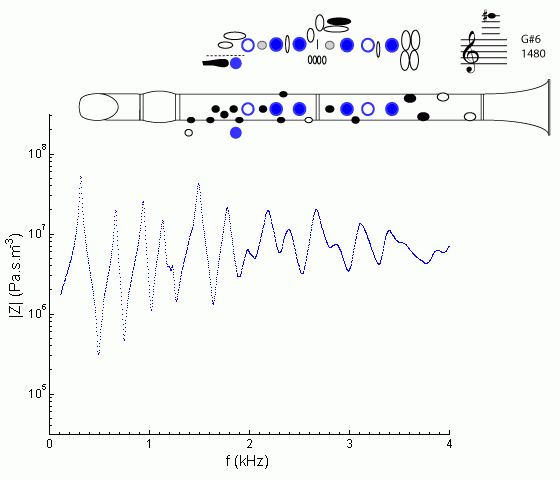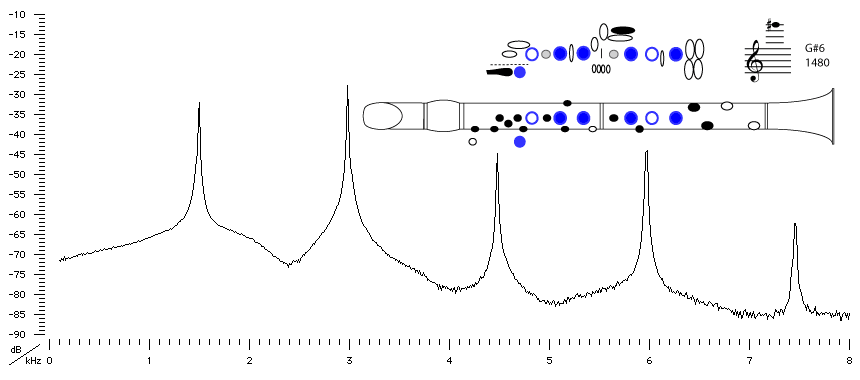| Acoustics of the clarinet |
Bb clarinet |
G#6 |

|
Fingering Acoustic schematic Non-specialist introduction
to acoustic impedance Notes are the written pitch. |
This is similar to an alternative fingering for B3 and F#5, but it has two register holes. These lower and displace the first two peaks. We could think of this as a flat seventh harmonic of B3 (the seventh harmonic lies about midway between G#6 and A6, a flat - see the sound spectrum for B3). This fingering is also very similar to that for D#6, but impedance spectra are quite different, except for the first one (or possibly two) peaks. This difference at higher frequencies is because the D#6 fingering is a cross fingering and so the reflection near the right index finger is more complicated than that for G#6.

Sound spectrum
of a Bb clarinet
played using fingering for G#6.
For more explanation, see
Introduction to clarinet acoustics
|
Contact:
Joe Wolfe
/ J.Wolfe@unsw.edu.au |